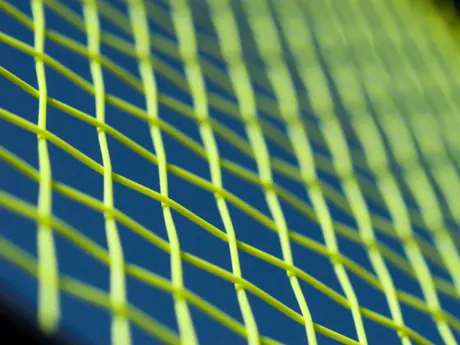
One of the most powerful weapons you can use to beat an opponent and improve your tennis game is sitting right inside your tennis bag.
It's the string in your racquet; and it's more important than you might realize.
With the 2014 spring tennis season just around the corner there are a few things you should know to prepare your equipment for a successful season.
More: 6 Tips to Pick the Right Racquet
Getting Your "Tune-Up"
A new tennis industry supported campaign, entitled "Tennis Tune-Up," has been launched by the Tennis Industry Association in conjunction with the United States Racquet Stringers Association and tennis industry manufacturers.
This industry-wide effort is encouraging players like you to visit your local pro-shop or tennis specialty store where a certified racquet technician can help fit your to the proper string to help you play your best. In addition, the campaign makes it easy for you to find these certified racquet technicians near you by visiting PlayTennis.com and using the consumer friendly search functions of the site.
How Often Should You Re-string
As a general rule, consider restringing your racquet(s) as many times each year as you play in a week. If you play two to three times a week, then you'll want to replace the string on your racquet two to three times a year.
Strings Types
There are four primary materials used for tennis stringing: nylon, polyester (aka "poly"), kevlar, and natural gut. To get the most out of your game and your equipment, it's important that you let an expert help match you to the right string and tension.
Nylon String
The most used stringing material, often called "synthetic gut," comes in a variety of constructions and shapes and is typically stiffer than natural gut, but softer than polyester or kevlar. For those who don't break strings very often, nylon may be the way to go, especially if you don't want to spend the big bucks for natural gut.
Polyester
This string is growing in popularity on the pro tour and for recreational players. It can offer enhanced spin for players with long, fast swing speeds. It's frequently used in hybrids as a stiffer, more durable alternative to nylon or natural gut. But, it might not hold tension as well as the other materials.
Kevlar
This string type is a stiff and durable string, which is generally used in hybrid stringing jobs. Hybrid stringing mixes two types of string—one for the mains and one for the crosses—and is great for players who break other string materials quickly.
Natural Gut
Natural gut is the softest, but most-expensive stringing material on the market. On the plus side, natural gut is the most-arm friendly string available for those of you who may suffer from "tennis elbow."
Natural gut is used by players of all ability levels and swing styles and provides good tension maintenance.
Now that you're equipped with some basic stringing knowledge and what your options are in "tuning-up" your racquet, make sure to get into the shop before your next big match. Something as simple as new string that matches your needs can make a dramatic difference in your performance.
More: Top 10 Reasons to Play Tennis
 Search for your next tennis event.
Search for your next tennis event.








Discuss This Article